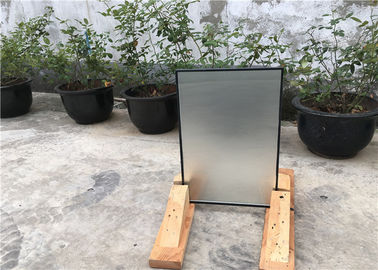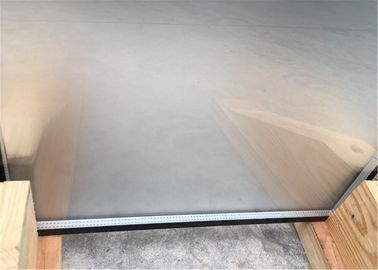16 Mm Hollow Glass Window Panels With Lower HVAC Costs , Protects Privacy
পণ্যের বিবরণ:
| Place of Origin: | CHANGSHU CHINA |
| পরিচিতিমুলক নাম: | SYSEN |
| সাক্ষ্যদান: | IGCC IGMA |
| Model Number: | S119 |
প্রদান:
| Minimum Order Quantity: | 1 PIECE |
|---|---|
| মূল্য: | negotiable |
| Packaging Details: | plywood packing |
| Delivery Time: | 25 DAYS |
| Payment Terms: | L/C, T/T |
| Supply Ability: | 10000 PECEC MONTH |
|
বিস্তারিত তথ্য |
|||
| Thickness:: | 5mm+5mm 6mm+6mm 8mm+8mm | size: | Custom design availble |
|---|---|---|---|
| Usage:: | building door window | Application: | building |
| সাক্ষ্যদান: | IGCC IGMA | Thickness: | 16-30mm |
| Type: | Float Glass | ||
| বিশেষভাবে তুলে ধরা: | double insulated glass,double glazed glass |
||
পণ্যের বর্ণনা
The advantages of energy efficient windows are:
- The insulating glass is made of two or more layers of flat glass. Surrounded by high strength and high air tightness compound adhesive, two or more pieces of glass are sealed and sealed with sealing strip and glass strip. The middle is filled with dry gas, and the inside of the box is filled with desiccant to ensure the dryness of the air between the glass sheets. Glass may be selected according to the requirements of various properties, such as clear float glass, embossed glass heat absorbing glass, heat reflective glass, laminated glass and tempered glass and the frame (or aluminum frame glass etc.), by cementation, welding or welding.
The structure is shown as a double layer hollow glass section. Hollow glass can adopt 3, 4, 5, 6, 8, 10, 12mm thick slice original piece glass, the air layer thickness may use 6, 9, 12mm intervals.
The thermal conductivity of the glass is 27 times that of the air. As long as the insulating glass is sealed, the insulating glass is in the best heat insulation effect.
There is some space between the glass and the glass of the insulating glass. The frame is filled with desiccant to ensure the dryness of the air between the glass sheets. The spacing between the two layers of insulating glass is usually 8mm.
-
High performance hollow glass is different from ordinary insulating glass, except at the middle of the two layers of glass sealed in dry air, but also on the outside of the glass in the middle layer of air side, special coated with a layer of thermal performance of metal film. It can cut off considerable energy from the sun into the room and achieve greater thermal insulation.
![]()
principle
Because the hollow glass exists can adsorb water molecules desiccant, gas is dry, the temperature is reduced, the internal hollow glass does not produce condensation phenomenon, at the same time, the outer surface of the hollow glass dew point will rise. Such as when the outdoor wind speed is 5m/s, the indoor temperature of 20 degrees Celsius, relative humidity is 60%, 5mm glass in the outdoor temperature to begin condensation 8 DEG C, and 16mm (5+6+5) hollow glass under the same conditions, the outdoor temperature is -2 DEG C when condensation, 27mm (5+6+5+6+5) three layers of glass at room temperature outside -11 C before condensation.
There are three ways of transmitting energy in insulating glass: radiation transfer, convection transmission and conduction transmission.
Radiative transfer
Radiative transfer is the transmission of energy through radiation in the form of radiation, which includes visible, infrared and ultraviolet radiation, as does the transmission of solar rays. Reasonable allocation of insulating glass and reasonable insulating glass interlayer thickness, can maximize the reduction of energy transmission through the radiation form, thereby reducing the loss of energy.
Convection transfer
Convection is due to a temperature difference between the two sides of the glass, which causes air to fall on the cold side and rise on the hot side, causing convection of the air and causing energy loss. There are several reasons for this phenomenon: one is the poor sealing frame system and the surrounding glass, causing gas exchange inside and outside the window can directly cause convection, leads to the loss of energy; the two is to design the internal spatial structure of the hollow glass is not reasonable, resulting in the air in the hollow glass convection due to temperature difference. Driven by the energy exchange, resulting in energy loss; three is the temperature difference between inside and outside the structure of the whole system window is larger, resulting in hollow glass, the temperature difference between inside and outside is large, cold radiation and heat conduction through air, first produced convection on both sides of the insulating glass, hollow glass and then through the whole transfer in the past, the formation of energy loss. Reasonable insulating glass design can reduce the convection of the gas, thereby reducing the energy convection losses.
Conduction transfer
Conduction transfer is through the object molecular motion, driven by the energy movement, to achieve the purpose of passing, like iron rice and electric soldering iron things, and the energy transfer of conduction insulating glass is accomplished by glass and its internal air. As we know, the thermal conductivity of glass is 0.77W/ MK. The thermal conductivity of air is 0.028 W/ MK, thus, the glass thermal conductivity rate is 27 times the air, air and water molecules in the active molecules, are the main factors that influence the hollow glass energy conduction transfer and convection transfer performance, thus improving the sealing performance of hollow glass, is an important factor to improve the hollow glass insulation performance.
| Normal size | 5mm+Air+5mm,6mm+Air+6mm,8mm+Air+8mm, etc. |
| Color: | Clear glass or Tinted glass |
|
Function and characteristics: |
1. Energy Saving: For the low heat conductibility of the sealed air between the glass, the insulated glass can reduce heat transfer from inside to outside. Therefore, it can save energy by 30%-50%. |
|
2. Smooth and flat surface and good vision 3. Excellent optical performance 4. Stable chemical properties 5. Flexible size specifications, minimizing cutting loss 6. Substrata for each level of glass processing. 7.No dewing in low temperatures |
|
| Applications: | Widely used in all kinds of curtain wall of building ,indoor partition or refrigerator |





